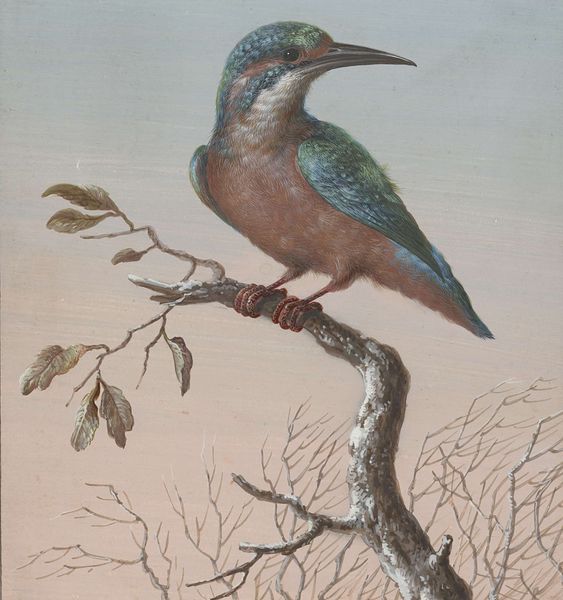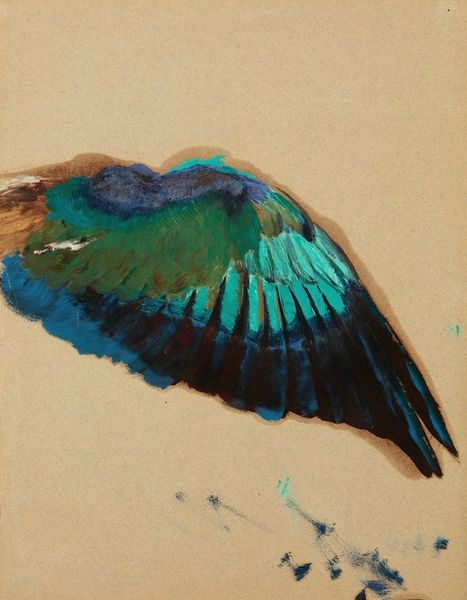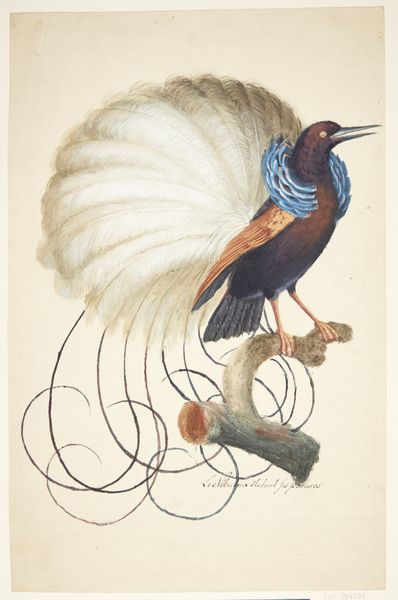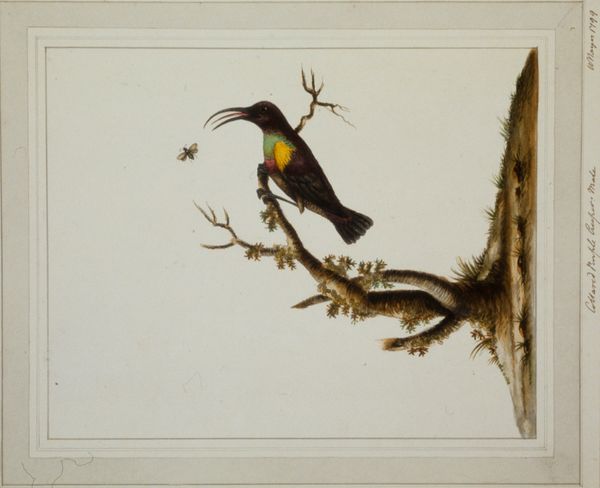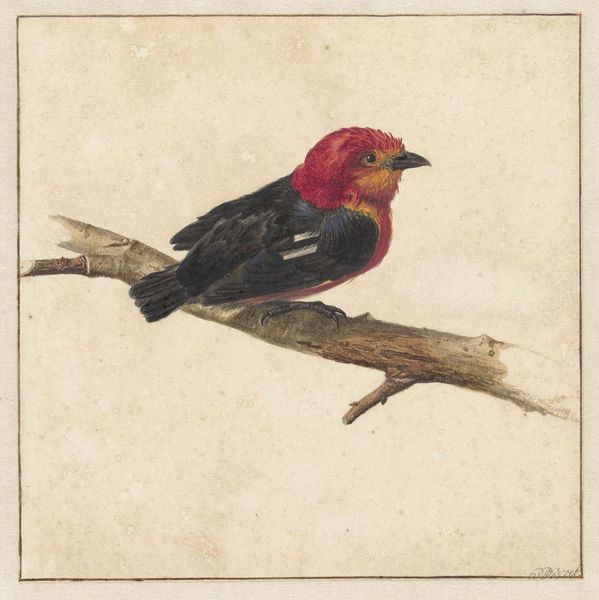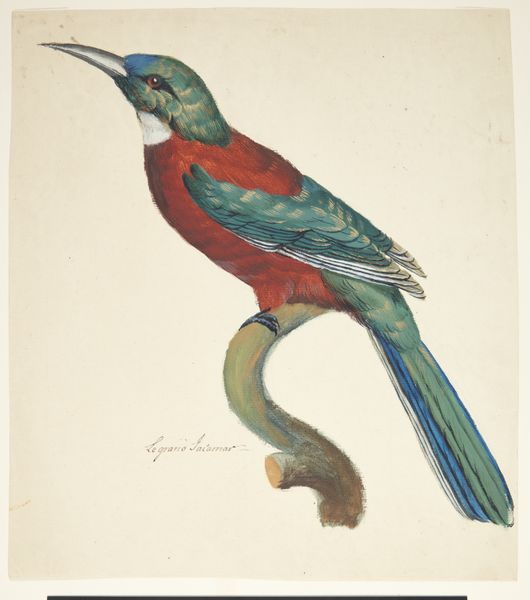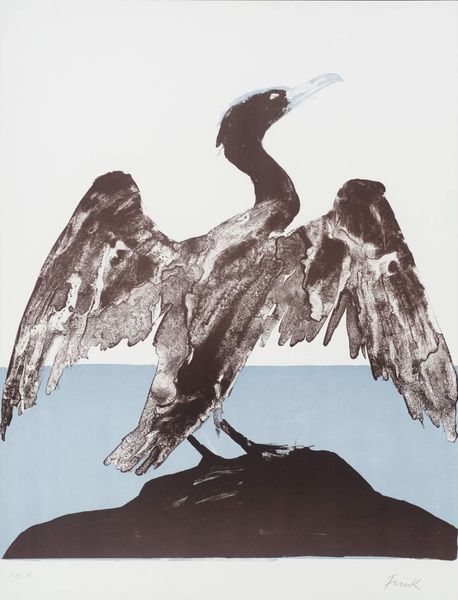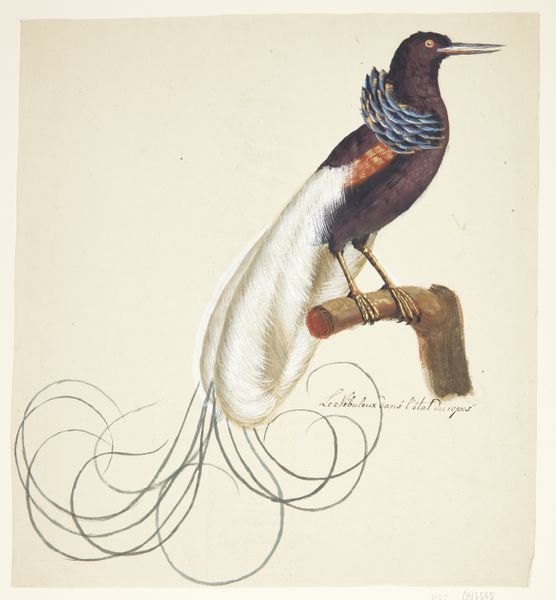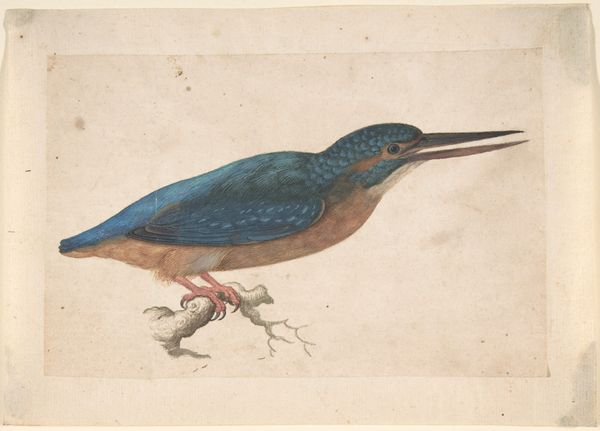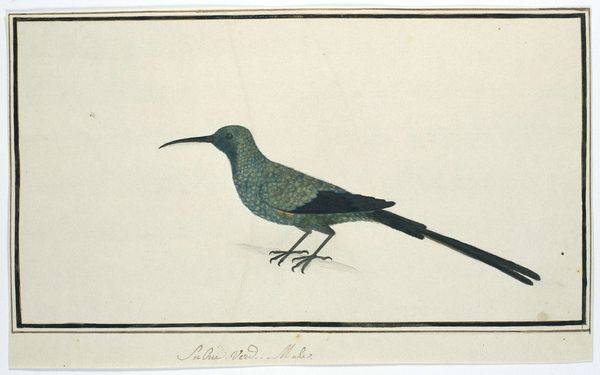
drawing, plein-air, watercolor
#
drawing
#
impressionism
#
plein-air
#
landscape
#
oil painting
#
watercolor
#
animal portrait
#
realism
Copyright: Public domain
Curator: The jewel-like intensity of this piece immediately grabs my attention! Editor: Indeed. This is John Ruskin's "Kingfisher," rendered in 1871, seemingly a watercolour and drawing piece. Ruskin, so well-known for his writing and social commentary, was also a rather skilled artist. Curator: The way Ruskin captures the iridescence of the kingfisher's feathers is mesmerizing. It feels like more than just a depiction of a bird; it’s an assertion of presence, of the natural world resisting the encroachment of industrial England. Editor: Resist perhaps, but also beautifully observed. Look at how the light plays across the plumage, how form emerges through delicate gradations of tone and texture. The strategic application of washes—concentrated here, thinned there—creates an illusion of three-dimensionality on this two-dimensional plane. It flirts with abstraction but maintains a keen sense of realism. Curator: Considering his social commentary on Victorian England, Ruskin's choice to isolate and celebrate a creature like the Kingfisher takes on added meaning. It becomes an emblem for a world under threat from environmental degradation, perhaps reflecting a longing for ecological balance and reverence for non-human life. Editor: I see that tension between accurate depiction and something akin to a subjective feeling. It is about creating a window onto reality through manipulating media. Note his choice of watercolor to embody a bird with obvious affiliations to water. The very materials have symbolic significance, adding depth beyond mere representation. Curator: And that commitment to a kind of scientific realism in depicting the natural world! He clearly wasn’t just an observer, but someone intimately engaged with and concerned about the future he and others were creating. There is an implication for us, the observers and inhabitants, to preserve such beauty. Editor: Absolutely, and by emphasizing artistic practice that acknowledges and amplifies a larger world, rather than simply the interior landscape of an individual artist, this piece feels so important. Curator: It reminds us that art doesn’t exist in a vacuum—that aesthetics and ethics are intertwined. Editor: Indeed. This detailed observation, coupled with a careful, light handling, suggests that his intention was never one of pure naturalism, but to reveal and give to the viewer an access to nature.
Comments
No comments
Be the first to comment and join the conversation on the ultimate creative platform.
